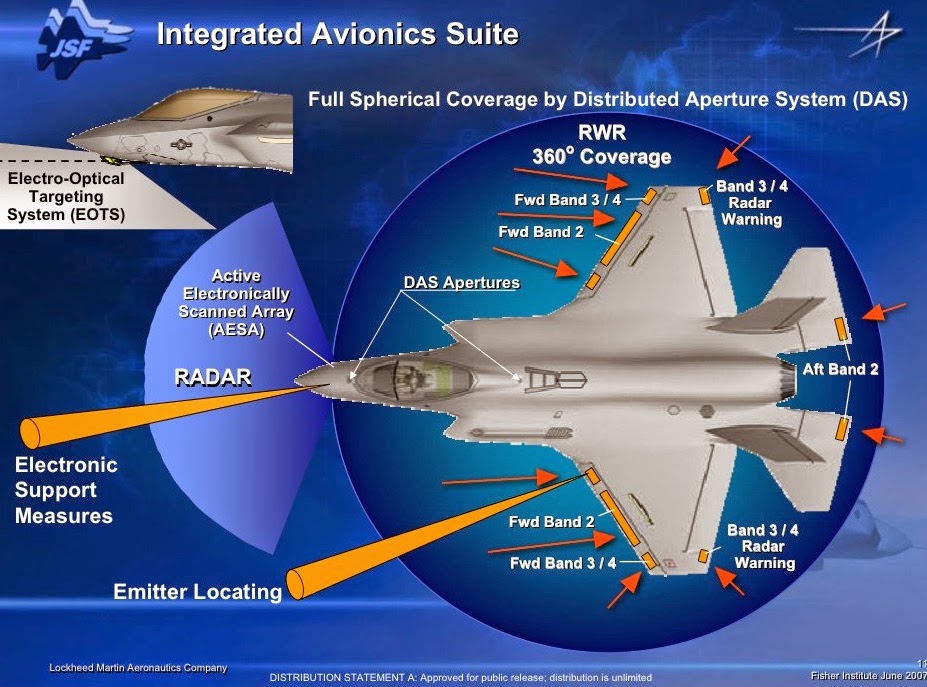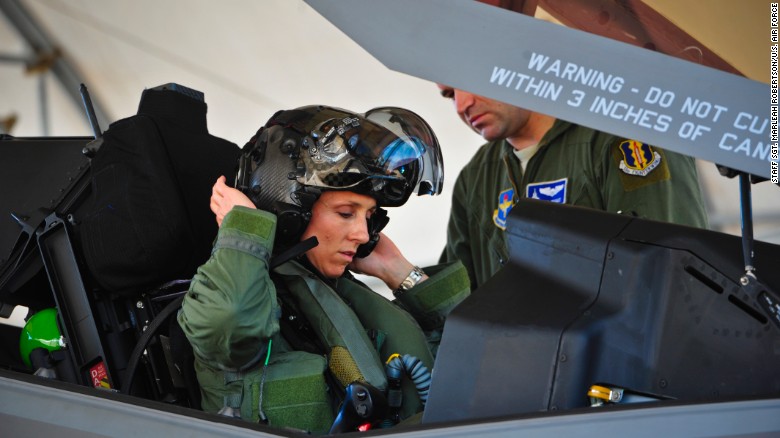JayS wrote:I personally don't think Trump can (let alone 'would') cancel F35, no one can. US is simply too invested in F35 now to back off for any damn reason. More like he'll do some drama and take the credit of anyway eminent cost reductions. He's not President yet. He would get far more information about the situation when he becomes President.
He met with the Program leader from the services side, LM CEO and them walked out and said that he will reduce the cost of the aircraft "beautifully". He then pointed the PEO out and said that he was a good negotiator (no doubt he was filled in on the LRIP-9 negotiations). He did not say he will cancel the program. His Secretary of Defense Nominee has already cited the importance of the aircraft to US modernization as recently as
this week.
There are only 2 ways you can reduce the cost of the F-35 (URF and APUC). One is to stay on or accelerate the program's production ramp up. There will be bumps along the way since the industry has not produced at this rate for a long time and there will have to be quite a few new suppliers brought in. In fact expect that to be the case even with the current planned increase from 50 to 90 and then to 120 and beyond. There are always learning curve issues that pop up every time new suppliers begin producing, even using established processes.
Another way would be to reduce capability i.e. ask for a less capable variant that does not possess all the features of the current one. Option one is likely to be the one exercised if anything different is done.
Do note that if they do nothing and let the program move on the path General Bogdan and Frank Kendall have put it on, it will deliver 5-7% reduction in LRIP-10 compared to LRIP9, making LRIP -10 the first version to have a URF in the mid 90's (Million/A-variant) including the mission systems, aircraft and engine. As the program stands LRIP-9 agreement is finalized and the aircraft are in the production chain. LRIP-10 pre-contracting (Long lead items) and contract ceilings have been agreed upon and Lockheed has been paid Billions to start producing the aircraft. Pratt and Whitney has SIGNED a contract to supply 99 engines to support LRIP-10 contracts. LRIP - 11 Long lead production has most likely also started.,
They have put themselves on a path to get to $85 Million URF in then year $$ by Full Rate Production. This is essentially paying 4.5 Generation prices for a 5th generation product. You can obviously look at more efficiencies but then the returns start to diminish as you require tremendous investments in time and money to squeeze out the last bit of savings.
Also, there is a limit to the US services annual buy rate. They'll like to buy as many a year as they can afford but you can't put yourself in a position to buy so many a year that it takes money away from other programs. The services have in the SAR defined their procurement quantities that they have budgeted in their long term planning. Trump can obviously work with the Congress to increase that level by funding for a higher top-line but concentrating on the export market may be a better option in the short term.
Folks here and elsewhere do not realize how disruptive canceling the program would be. This is why when it had its NM breach, the Congress and a Democratic White House (more likely to cancel defense programs) kept it afloat, made leadership changes, demanded LM make leadership changes, restructured the program and put it on a path to where it could deliver a product that everyone was happy with.
It is not about being "too big to fail", but rather being "too important to fail". It gives the USAF, USMC and USN a cutting edge 5th generation platform at a highly affordable cost and most importantly gets them the "quantity" they require to replenish and modernize vast amounts of their cold war legacy tactical fighter fleet. Do away with it and all you are left with are F-16's, F/A-18's and F-15s when the entire world has seen the importance of 5th generation capability and developed capacity to produce or acquire the capability in quantity, particularly your competitors in China and Russia.
Folks also do not realize that the US forces have been deployed off and on for well over a decade (some would say practically non stop since the original Gulf-War). The Marine Corps Aviation is totally
BROKEN..
They are pulling out spare parts from Museum birds as we speak and are looking to buy back some foreign F/A-18C's (Kuwait) to keep their current aircraft flight worthy. The USAF will be there soon with their oldest F-16's. Forum banter aside, they cannot afford to wait 30 or so years it will take to develop to a certain forum member's phantom requirements of hypersonic-cruise, and chameleon skin and son of watson...They need frames NOW, not 30 years from now.
There is a reason why those flying it, and those planning US defenses would oppose any attempt to cut back the program as stated by the current SECAF..It is delivering results to them and they can prove it by taking Trump's team to Red Flag later this month, or to Northern Edge as well. The F-35B has been on a number of large force exercises already and the F-35A will go to its first Red Flag in a few days.

TSJones wrote:since neshant reposted an article already posted by austin, I will state once again........
Further evidence of this was revealed on Wednesday, when Inside Defense exposed the fact that the Navy’s F-35C model has design defects that can cause pilots to suffer disorientation and severe pain when undergoing carrier catapult launches.
the above quote is BS......the f-35c flies itself off of the carrier (so does the f-18). the pilot doesn't touch the stick until well away from the carrier.
the writer is an uninformed political hack.
It isn't BS. They discovered issues (why you do testi during the last DT testing of the Charlie upon launching form the CAT. Things pop up that is why you have not one but up tong) 3 or 4 developmental testing deployments to find these faults, to develop fixes, to go back and test and validate them and then implement them. As I had mentioned in the US Military thread, the Charlie is the least mature variant from testing perspective. While others have mostly completed their Developmental testing and structural and weapons carriage testing (internal) the C variant is still a little behind because it was the last one out. The Navy has a different schedule to the USAF and USMC so it was always expected that their testing activity would finish last.
The red team has recommended certain measures. As was done during the bulkhead issue (that also surfaced during testing) not he B's, and the helmet issue with the USAF pilots (not effecting any other branches for reasons I've mentioned before) they develop fixes, and test them before approving them for production. THat's what will happen here. It's not a show-stopper, not for the C variant, not for the program. You do extensive testing for this very purpose - so you do not have discoveries when you are operationally deployed when your ability to address them is minimal.
Let's set aside Popular Mechanics to where it belongs (dumpster) and go directly to the Source (InsideDefense) that is the only publication that has seen the testing memo -
Problem -
"During a catapult launch the nose landing gear strut is compressed as the catapult pulls on the nose landing gear, with the hold back bar restraining the aircraft from forward movement due to engine thrust," according to a Dec. 28 Navy information paper viewed by Inside Defense. "Upon release of the hold back bar, the nose landing gear strut unloads and vertically oscillates as the aircraft accelerates towards take-off."
The motion is not only uncomfortable but the Helmet-Mounted Display and oxygen mask push back and up and down against the pilot's jaw. The jostling in the cockpit results in unreadable HMD during and immediately after launch, the paper reads.
"The Red Team believes multiple factors are contributing to the problem, including the pilot's seat restraint and hand-hold (grab bar) locations, the mass and center-of-gravity of the F-35 helmet and display unit, the physical characteristics of the nose landing gear strut (load vs. stroke, damping), and the length and release load of the repeatable-release hold-back bar (RRHB)," according to the paper.
Potential Solutions -
The short-term actions are slated to begin in early 2017 and will take about two to six months to complete, according to the paper. The actions include implementing improved and standardized restraint procedures for pilots and flight testing later this month on the effects of a reduced RRHB release load. VFA-101 will evaluate both the restraint procedures and a reduced RRHB load during its next carrier qualification period in the spring, the paper reads.
In late 2017, medium-term actions ranging from six to 12 months to complete will begin. These include HMD symbology, nose landing gear modifications and pilot motion modeling. Regarding symbology, "Options are being considered that would simplify the information displayed to the pilot during and immediately after catapult launch, to make it easier for the pilot to interpret flight-critical data," the paper notes. One of the problems here is the contractor doesn't think there is enough time in the system design and development phase to demonstrate this in simulation, according to the paper.
Long-term actions would not begin until 2019 and would take 12 to 36 months to complete. These include RRHB geometry that would reduce compression of the nose gear strut before launch. This course of action may require ship modifications, according to the red team.
^ This is exactly how test programs are supposed to function. Testing isn't performed to celebrate your design and spend years congratulating yourself on creating a perfect aircaft. It is done to isolate, discover, and find root-causes of flaws and then go and fix them.
What happened when a bunch of tabloids took a hold of this ID article? "May require" part disappeared and they forgot to report that the Red Team said "
A redesign [ of the landing gear ] is not being pursued" 
.
Anyhow, there is an extremely relevant masters paper somewhere on NTIS about similar issues with the F/A-18C when the JHMCS was introduced into service. Worth digging up.








